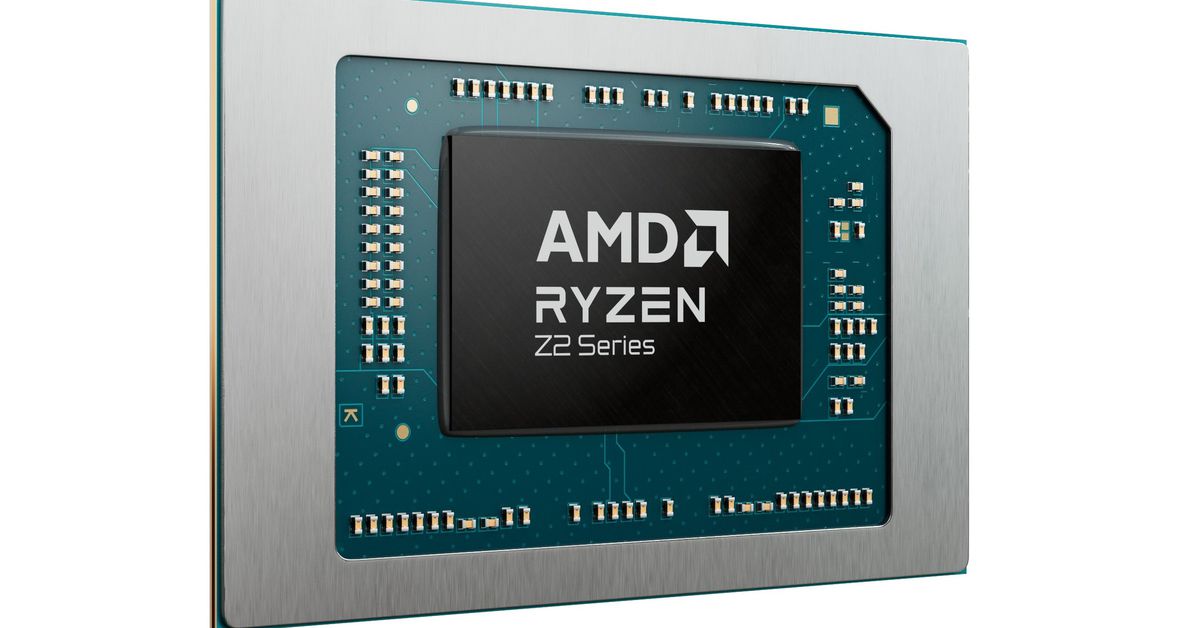AMD Unveils Z2 Handheld Gaming Chips: A New Era for Portable Gaming
AMD has officially announced its latest innovation in portable gaming technology with the launch of the Z2 handheld gaming chips. This announcement signifies a pivotal moment in the evolution of handheld gaming, raising both excitement and curiosity among gamers and industry analysts alike. But with the notable absence of these chips from the popular Steam Deck, one can’t help but wonder: will these new chips redefine the handheld gaming landscape, or are they destined for niche markets?
Understanding the Z2 Chips: Technical Specifications and Features
The AMD Z2 handheld gaming chips are designed to offer a significant leap in performance for portable gaming devices. Featuring advanced architecture and enhanced power efficiency, these chips promise to deliver immersive gaming experiences without the compromises often associated with handheld devices.
- Architecture: The Z2 chips are built on AMD’s latest architecture, which optimizes performance while minimizing power consumption. This is particularly crucial for handheld devices where battery life is a major concern.
- Graphics Performance: With integrated RDNA 3 graphics, the Z2 chips support high-fidelity graphics and smooth frame rates, enabling gamers to enjoy visually stunning titles on the go.
- Support for Ray Tracing: One of the standout features of the Z2 chips is their ability to handle real-time ray tracing, a technology that enhances lighting and shadow effects in games, providing a more realistic experience.
- Customizability: These chips are designed for manufacturers to easily integrate into various handheld devices, allowing for a wide range of form factors and designs.
The Implications for Portable Gaming
The implications of AMD’s Z2 handheld gaming chips extend beyond just technical specifications; they could herald a new era for portable gaming. Here are several key areas where these chips could impact the market:
- Enhanced Gaming Experiences: With improved graphics and processing power, gamers can expect a more immersive experience. This could lead to the development of more complex and visually stunning games that were previously unfeasible on handheld devices.
- Increased Competition: AMD’s entry into the handheld gaming chip market could spur competition among manufacturers, encouraging innovation and potentially lowering prices for consumers.
- Broader Game Library: The powerful capabilities of the Z2 chips may attract more developers to create titles specifically optimized for handheld devices, broadening the game library available to users.
- Potential for Cross-Platform Play: As gaming ecosystems become more interconnected, the Z2 chips could facilitate cross-platform play, allowing handheld devices to integrate seamlessly with home consoles and PCs.
The Absence from Steam Deck: What Does It Mean?
One of the most notable aspects of the Z2 announcement is its absence from the Steam Deck, Valve’s highly successful handheld gaming device. This raises several questions regarding the future of portable gaming:
- Strategic Partnerships: The absence of the Z2 chips in the Steam Deck could indicate a strategic partnership between Valve and AMD’s competitors. If this is the case, it might limit the potential reach of the Z2 chips in the current market.
- Market Segmentation: AMD may be targeting a different segment of the market than what the Steam Deck caters to, focusing on premium handheld devices that offer advanced features and performance, while the Steam Deck serves a more casual audience.
- Future Collaborations: It’s also possible that the Z2 chips could be used in upcoming handheld devices from other manufacturers, leading to exciting new options for gamers in the near future.
Potential Challenges Ahead
While the Z2 chips hold great promise, challenges lie ahead for AMD and the portable gaming market:
- Market Saturation: The handheld gaming market has become increasingly competitive, with various manufacturers vying for consumer attention. AMD must ensure that its chips provide a compelling advantage to stand out.
- Consumer Expectations: Gamers have high expectations for performance and battery life in handheld devices. If the Z2 chips do not meet these expectations, it could hinder their acceptance in the market.
- Development Time: It may take time for game developers to fully leverage the capabilities of the Z2 chips, meaning it could be a while before we see a substantial library of optimized titles.
A Glimpse into the Future of Portable Gaming
The unveiling of AMD’s Z2 handheld gaming chips is undoubtedly an exciting development in the realm of portable gaming. As technology continues to advance, we can expect several trends to emerge:
- Integration of Cloud Gaming: With the rise of cloud gaming services, future handheld devices may focus not only on local gaming performance but also on seamless connectivity to the cloud, allowing users to play high-end games without the need for powerful hardware.
- Augmented Reality (AR) and Virtual Reality (VR): The integration of AR and VR capabilities in handheld devices could open new avenues for gaming experiences, making them more immersive and engaging.
- Focus on Ergonomics: As handheld devices become more powerful, manufacturers will likely prioritize ergonomics, ensuring that devices are comfortable to use over extended periods.
Conclusion: A Bright Future for Handheld Gaming
AMD’s unveiling of the Z2 handheld gaming chips marks a significant milestone in the evolution of portable gaming. While their absence from the Steam Deck raises questions, the potential for these chips to redefine the landscape of handheld gaming is undeniable. As manufacturers begin to adopt these chips, we may witness a new wave of powerful, immersive handheld devices that cater to a diverse range of gamers.
Ultimately, the success of the Z2 chips will depend on how well they resonate with consumers and developers alike. If AMD can harness this momentum and create a robust ecosystem around the Z2 chips, the future of portable gaming could very well be brighter than ever before.
See more Future Tech Daily

